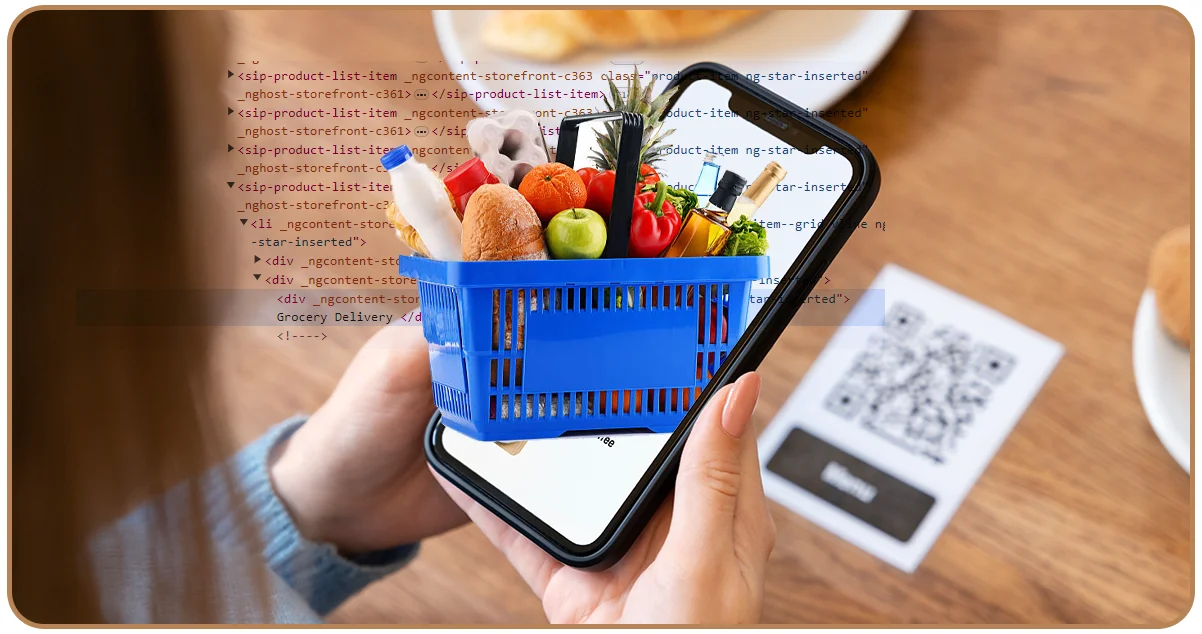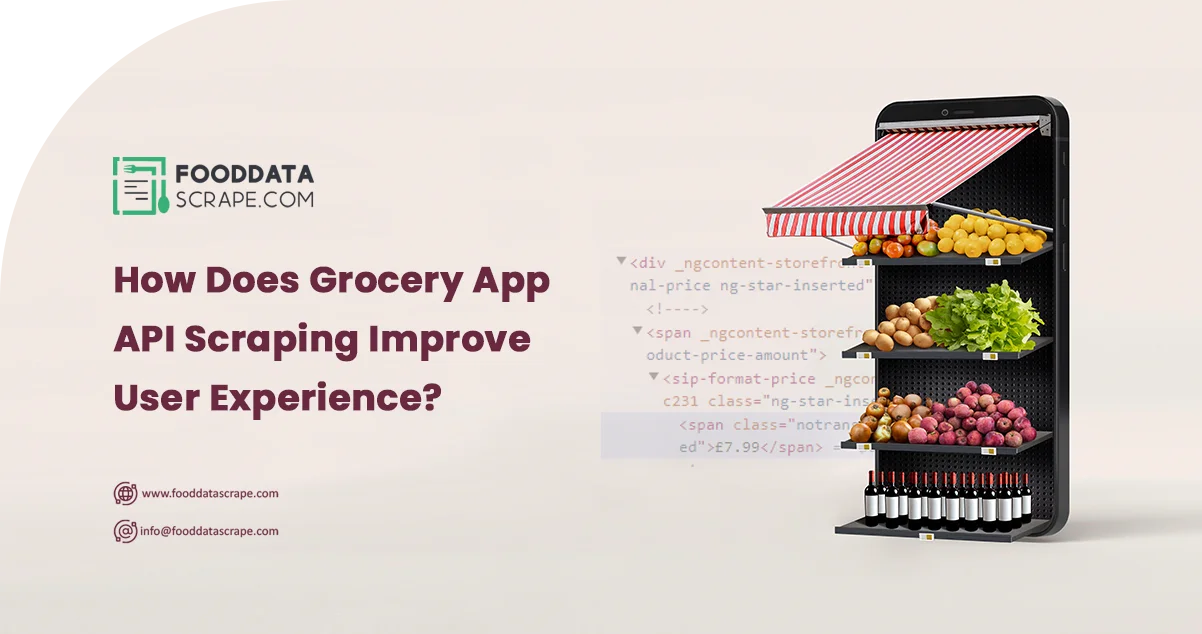Data scraping of grocery applications involves collecting data, including product portfolios, price offers, and customer feedback from the grocery applications. All the above information can be beneficial for retailers, manufacturers, and individuals who are thinking about investing in such appliances.
For grocery retailers, grocery app API scraping may be helpful in a strategy to spy on competitors and their prices, the stock on their shelves, and market trends. It also helps determine the right price to charge the market and manageable stock.
It also benefits manufacturers in some ways, including the following: It helps the manufacturer access customers' tastes and trends within the market and the position of their brands.
Grocery data scraping services help consumers by allowing them to check the price they need to pay, current promotions, and new products on the market. They can also enable consumers to make the right purchase decision by rating and reviewing the specific product in question.
Thus, collecting grocery data can be the first step in gathering large amounts of information that can be channeled and utilized to increase grocery performance.
Role of Scraping Grocery Data Using API

Scraping grocery data using APIs may be of great help in the optimization of data collection processes, as well as getting updated information directly from grocery apps. Unlike conventional scraping methods, APIs offer a more organized and effective way to extract any information. To scrape grocery data, businesses can tap into numerous details ranging from product descriptions, prices, and promos, as well as feedback on the part of consumers if they employ APIs.
Features of Grocery Apps API

Grocery APIs enhance the user experience by providing their functionality in shopping apps and APIs for grocery stores. The following are critical components in this regard:
Product Catalog: This allows the user to access a database of grocery products and their details, such as name, description, pricing, and availability.
Search and Filter: This enables a customer to perform product searches using relevant criteria like brands, categories, and prices until the results can be refined.
User Accounts: Manage and control someone's account, including features such as logging into it, registering yourself for an account, and configuring its settings.
Shopping Cart: Incorporating products into the basket, adjusting the numbers, and looking at the total cost.
Checkout Process: Going through a process that is unimpeded by any problems during transactions that may arise when making payments for goods bought online from merchants who accept them; this involves selecting how you might want to pay or have your items delivered, among other things in completing your order
Order History: Access to past order history, including details such as order date, items purchased, and total cost.
Promotions and Discounts: Fusing promotional offers, price cuts, and vouchers towards encouraging purchases.
Notifications: Push notifications to customers regarding their orders and discounts, among others, to keep them informed.
User Reviews and Ratings: This includes enabling users to post comments about products they have bought and rate them to assist others in making decisions.
Location-Based Services: Integration of location-based services to offer personalized recommendations and enable easy delivery tracking.
Integrating the APIs into grocery applications improves customers' shopping experience and enhances companies' operational effectiveness.
Significance of Scraping Grocery Data from Indian Apps

Scraping grocery data from Indian Apps can be significant for several reasons:
Regional Variation: India's diverse culture and geography lead to significant regional variations in grocery preferences and consumption habits. Scraping data from Indian grocery apps can help businesses understand and cater to these regional differences more effectively.
Seasonal Trends: India experiences diverse climatic conditions, leading to seasonal variations in grocery shopping patterns. Scraping grocery data can help track seasonal trends in product choices, allowing businesses to adjust their inventory and marketing strategies accordingly.
Cultural Insights: Indian grocery shopping is often influenced by cultural factors, festivals, and traditions. Scraped data often provides insights into these cultural nuances so that businesses can create compelling offerings that attract consumers' psychological convictions.
Supply Chain Optimization: Data scraping would be beneficial because it helps improve supply chain logistics through the timely distribution of goods.
Health and Wellness Trends: The growing emphasis on health and wellness has made it possible to use scraped data to unveil trends about the need for organic, natural, and healthy food products, which can help companies take advantage of this opportunity.
Economic Impact: Scraping grocery data will give you information that enables you to see how things like inflation rates or variations in income affect people's shopping habits at grocery shops.
Government Policies: India's regulatory environment and policies can significantly impact the grocery industry. Scraped data can be used if businesses want to stay updated about policy changes and adjust their plans appropriately.
To summarize, scraping data from grocery shopping apps gives businesses insights into the market, allowing them to customize their tactics to fulfill the unique necessities and likes of Indian customers.
Conclusion: Grocery app scraping API has several positive effects for retailers. The use of such technology gives merchants access to the latest details about items on sale, including their prices, available discounts, and customer feedback. It allows them to improve their decision-making process or maintain their market position by becoming more client-oriented. Grocery data scrapers assist enterprises in streamlining operations, enhancing inventory control, and growing profitability using characteristics like search and filter capabilities; user accounts systems, and seamless checkout processes. Scraping APIs in hypermarket apps enables businesses to tap into insights provided by data-driven decisions, improving their overall market performance.
Are you in need of high-class scraping services? Food Data Scrape should be your first point of call. We are undoubtedly the best in Food Data Aggregator and Mobile Grocery App Scraping service, and we render impeccable data insights and analytics for strategic decision-making. With a legacy of excellence as our backbone, we help companies become data-driven, fueling their development. Please take advantage of our tailored solutions that will add value to your business. Contact us today to unlock the value of your data.
























































































